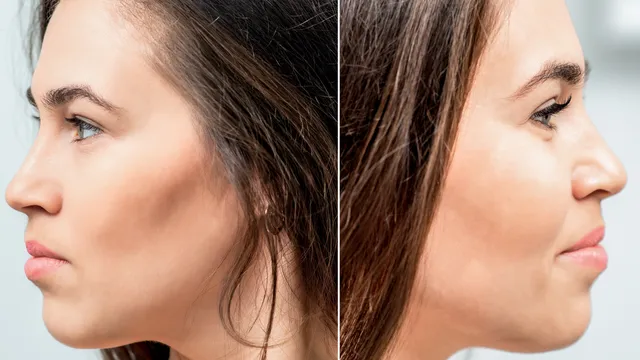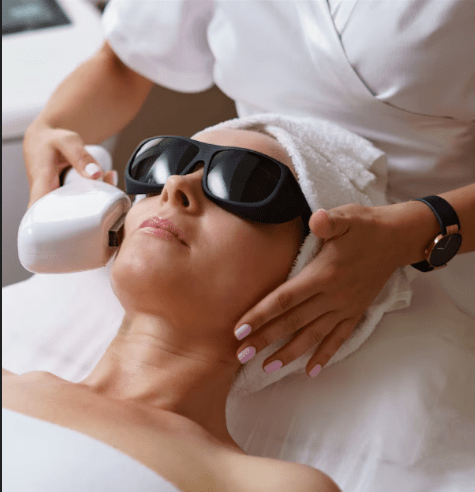While a deep plane facelift offers dramatic, natural-looking, and long-lasting facial rejuvenation, it’s still a surgical procedure—meaning there are inherent risks and potential complications. It’s important for patients to understand these risks to make informed decisions. Fortunately, in the hands of a board-certified facial plastic surgeon with deep plane expertise, most complications are rare and manageable.
Below is an overview of the most common risks, along with how surgeons minimize them:
1. Nerve Injury (Facial Nerve Damage)
Risk: The deep plane technique involves working beneath the SMAS layer, which is close to facial nerves that control muscle movement. Temporary or, in rare cases, permanent weakness or asymmetry can occur if a nerve is irritated or injured.
Minimization:
- Experienced surgeons use precise anatomical knowledge and gentle dissection techniques to avoid nerve pathways.
- Most nerve-related issues, if they occur, are temporary and resolve within weeks to months.
2. Hematoma (Internal Bleeding)
Risk: A hematoma is a collection of blood under the skin that may cause swelling, pain, or discoloration. It is one of the most common facelift complications, though still infrequent.
Minimization:
- Surgeons closely monitor blood pressure before and after surgery.
- Drains may be placed temporarily to remove excess fluid.
- Patients are advised to avoid heavy lifting, alcohol, and medications like aspirin before surgery to reduce bleeding risk.
- If a hematoma occurs, it’s usually drained promptly without lasting effects.
3. Infection
Risk: As with any surgery, there’s a small chance of infection at the incision sites or under the skin.
Minimization:
- Pre-operative antibiotics and strict sterile technique during surgery.
- Patients are given clear wound care instructions to follow at home.
- Infections, when they do occur, are usually mild and respond well to oral antibiotics.
4. Skin Necrosis (Tissue Loss)
Risk: Rarely, the skin may not receive adequate blood flow after the lift, causing skin necrosis (tissue death), particularly in smokers.
Minimization:
- Smoking cessation is required several weeks before and after surgery.
- Surgeons ensure proper blood supply by avoiding excessive tension on skin flaps.
- Any affected areas can often be treated with local wound care or minor revision.
5. Prolonged Swelling and Bruising
Risk: While swelling and bruising are expected, they sometimes last longer than average, particularly in patients with thin skin, certain medications, or underlying health conditions.
Minimization:
- Cold compresses and elevation of the head post-operatively help.
- Surgeons tailor aftercare plans and follow up closely to monitor progress.
6. Scarring
Risk: All surgical procedures leave scars, but in facelifts, they are typically well-hidden around the ears and within the hairline. Hypertrophic (thick or raised) scars are uncommon but possible.
Minimization:
- Surgeons use meticulous closure techniques and place incisions in discreet, natural skin creases.
- Patients may be prescribed scar gels or laser treatments post-op if needed.
7. Hair Loss Around Incision Sites
Risk: Incisions placed near the hairline can occasionally cause temporary or permanent hair thinning.
Minimization:
- Surgeons design incisions to preserve hair follicles.
- If thinning occurs, hair restoration options can address the issue.
8. Unsatisfactory Cosmetic Outcome
Risk: Some patients may feel the results don’t meet expectations due to asymmetry or undercorrection.
Minimization:
- Surgeons set realistic expectations during consultations.
- Revision surgery can be performed, but it’s rarely needed when the first procedure is done by an expert.
9. Delayed Healing
Risk: Healing may take longer in patients with diabetes, autoimmune conditions, or poor nutritional status.
Minimization:
- Pre-surgical screening and optimization of health.
- Close monitoring of healing milestones and tailored post-op care.
Final Thoughts: The Importance of Surgical Expertise
While the list of potential risks may seem long, it’s important to remember that complications are uncommon—especially in the hands of a skilled facial plastic surgeon who specializes in deep plane facelifts. Thorough consultations, pre-operative evaluations, and precise surgical techniques all play a vital role in minimizing risk and maximizing safety and satisfaction.




